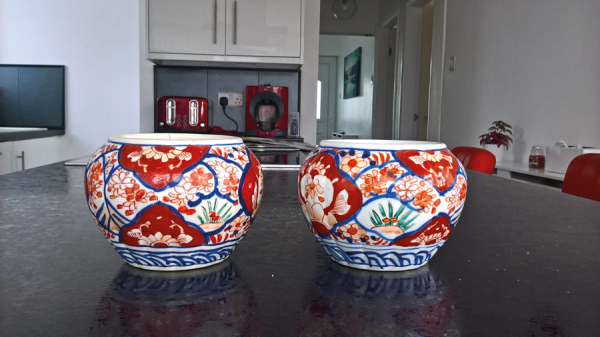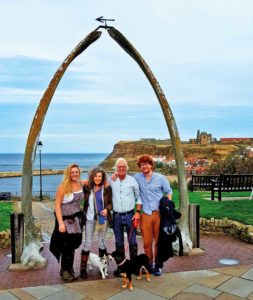This February column continues the historical journey into Ilkley Moor that I began last month, with a look at some of the rock formations and rock ‘art’ found around the area. The moor has a prolific amount of cup and ring marked boulders that are intriguing to stop and look at as you take a walk.
One of the most prominent cup and ring marked rocks on Ilkley Moor is The Haystack – so named recently as its shape resembles an old-fashioned haystack with two of its sides sloping down from a central ridge. The surface is covered with 70 hollows carved into the stone which are referred to as ‘cups’ and some of them have rings carved around them. There are also interlocking grooves cut into the stone. As with the other rocks on the moor, archaeologists are unsure of the purpose behind the carvings, partly because we do not know after all this time if we are seeing the whole picture. It is difficult with large rocks such as The Haystack as we can only see what is on the surface, and not what lies over the precipice. Much of the carvings may have been eroded over time and it is entirely possible that they were once painted with coloured pigments which have since washed away. The Haystack is situated on Green Crag Slack.
The Idol Stone is another well known example. This one has 27 cups that are mostly arranged in parallel lines along the length of the rock. A groove runs around the outside edge of the rock, and one of the cup lines in the centre, (a group of seven) is enclosed by a groove. Some suggest that this rock may have been some sort of game as it resembles an African game named Mancala. However, some archaeologists believe that the rocks around it are part of a collapsed cairn, which if that was the case, the stone could have had a more ritual purpose. The Idol Stone takes its name from the Idol Rock nearby, named by early historians whose fertile imaginations envisaged ‘cavemen’ type people making sacrifices to heathen gods. There is no archaeological evidence to support this theory but who knows? The Idol Stone is in the vicinity of the Haystack Rock, so is easily visited on the same walk.
Long before the swastika became synonymous with the Nazis, it was used as a religious symbol by many ancient communities around the world. Perhaps therefore the carving on the Swastika Stone has a spiritual meaning. Situated high above Ilkley on the edge of Woodhouse Crag, the stone differs somewhat from the other carved stones on the moor. The Swastika Stone features nine cups with a groove running between them which forms the arms of a Swastika. Another groove like a reversed question mark surrounds a tenth cup. What sets this example apart from the others, is the level of ordered design. Most only have a few cups which are sometimes surrounded by rings with no obvious pattern.
It is believed that the carvings on all these rocks were probably made in the late Neolithic or early Bronze Age. We may never know the reason behind them – religion, art or something else entirely, but they are certainly intriguing and allow your imagination to run away with how the ancient people of the moor may have lived thousands of years ago!







